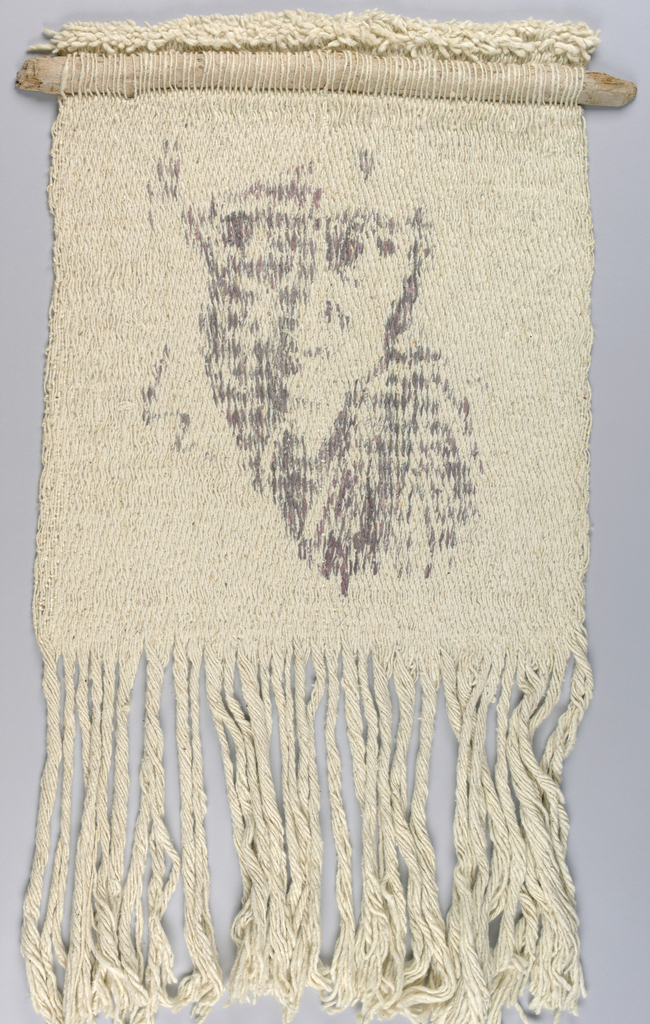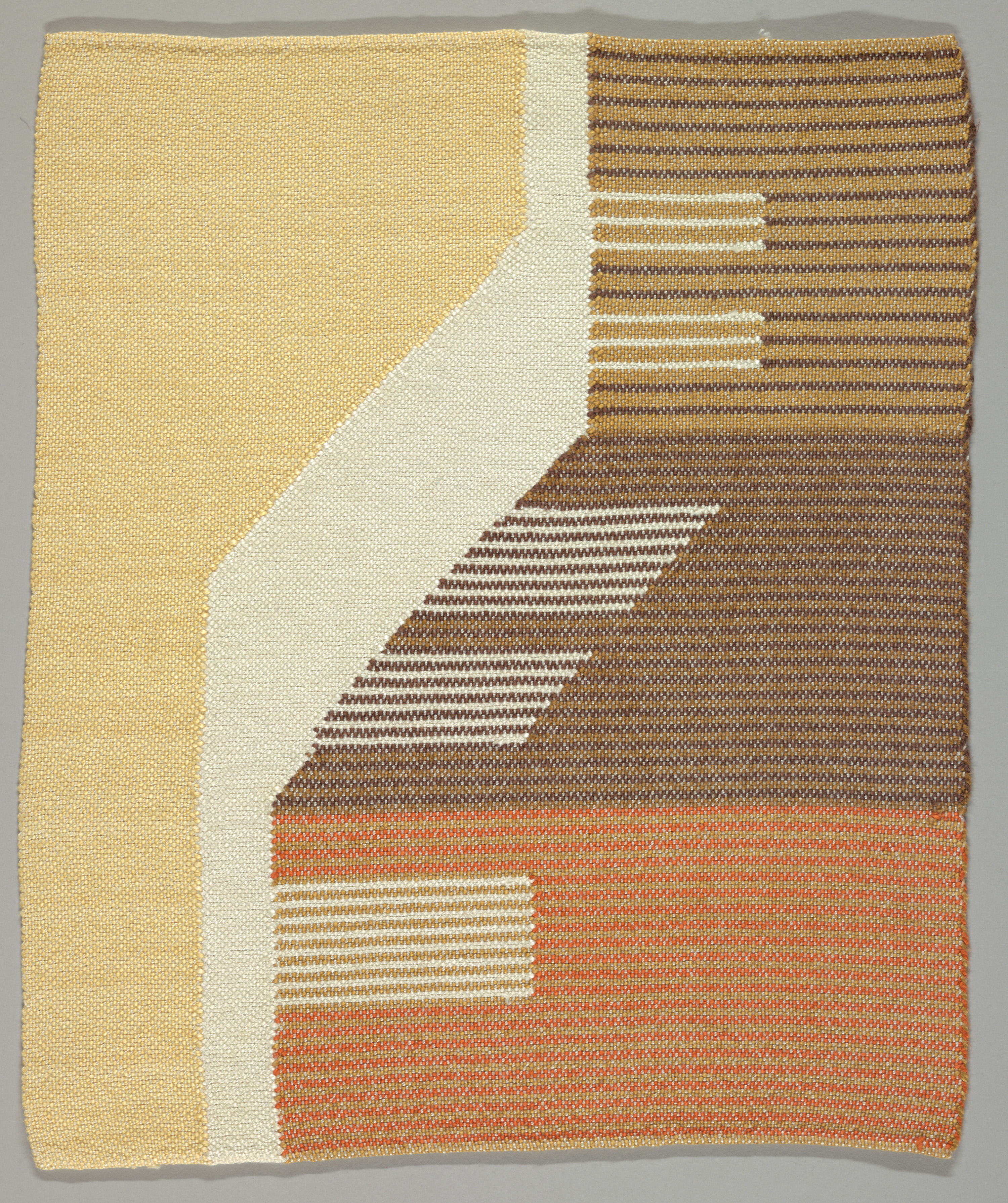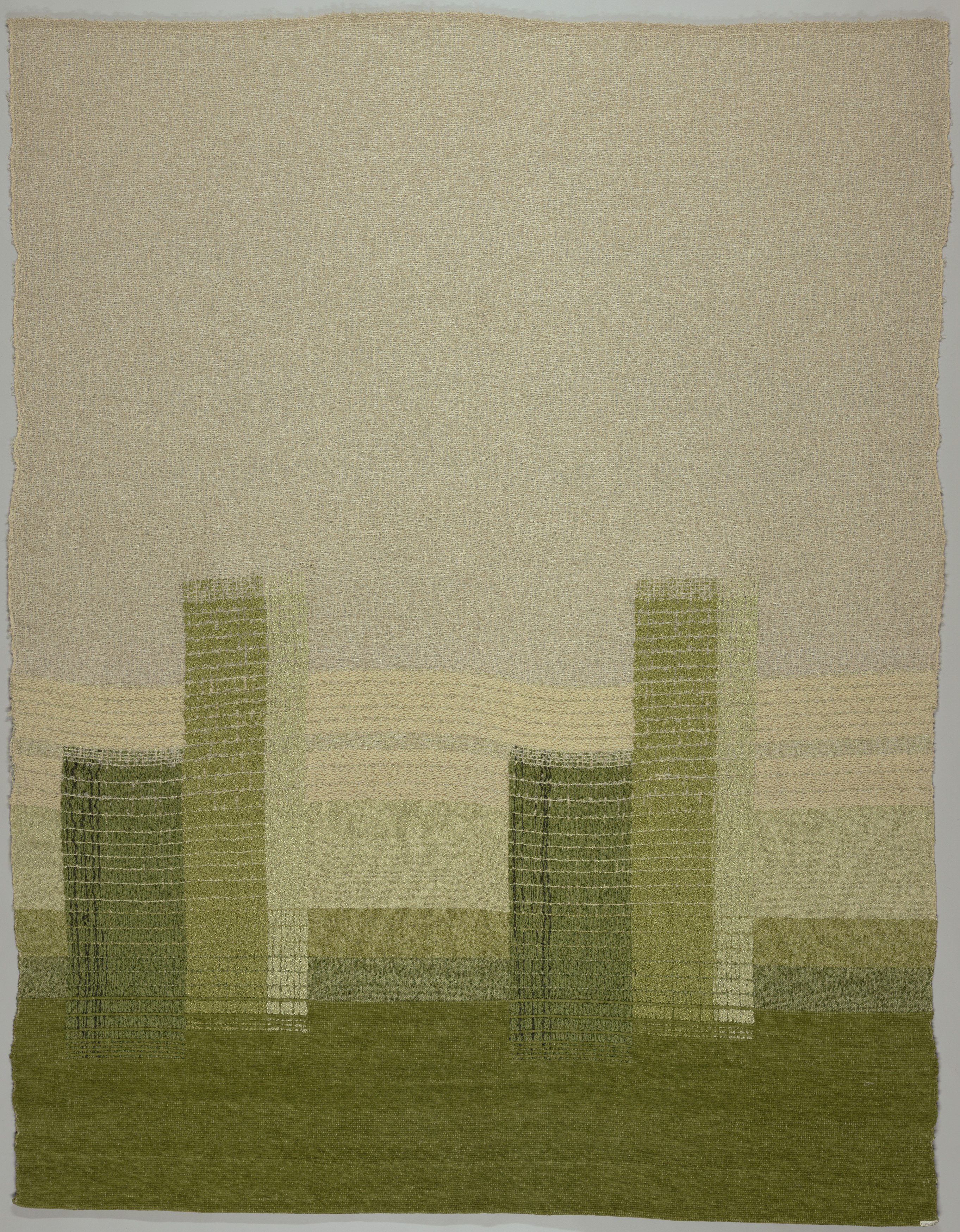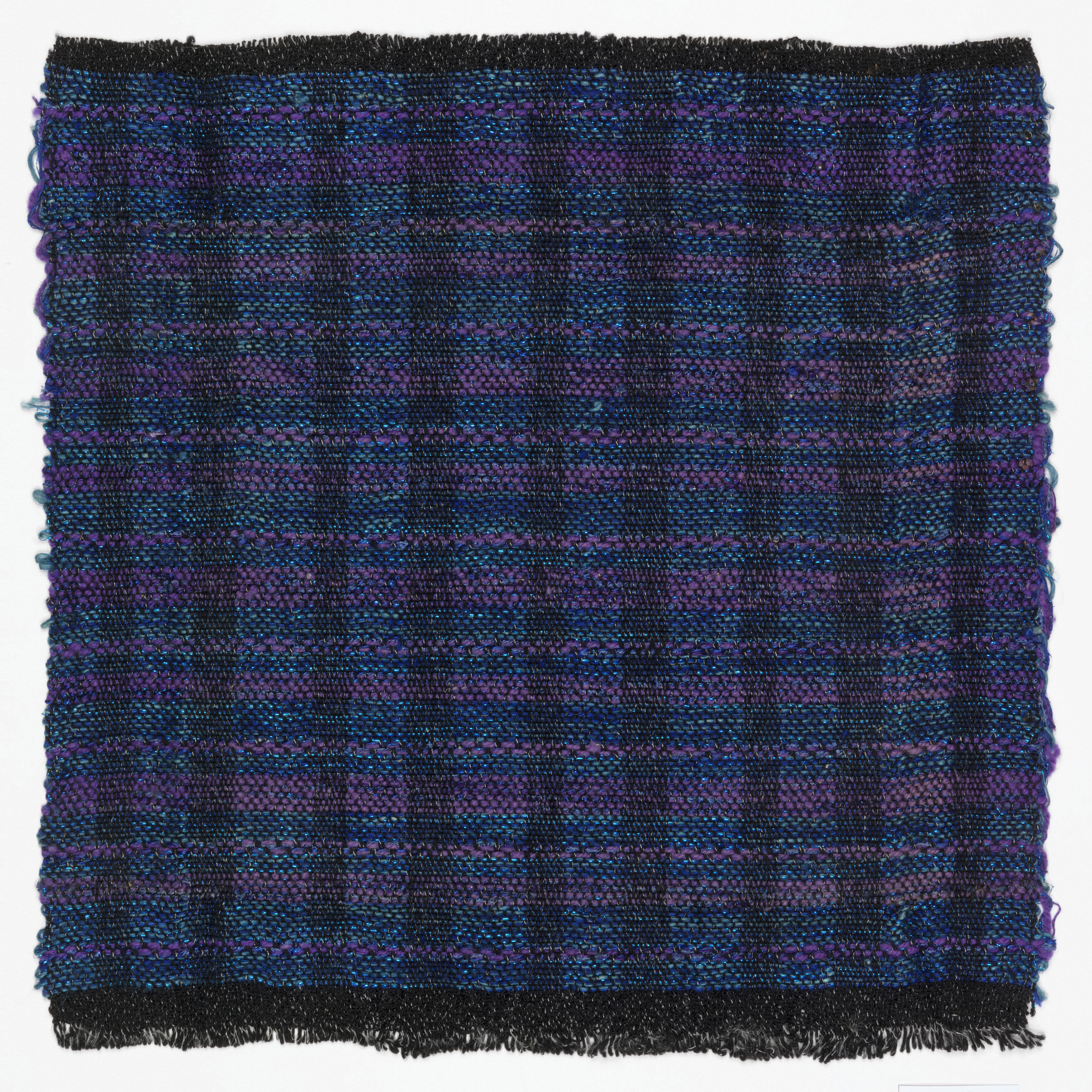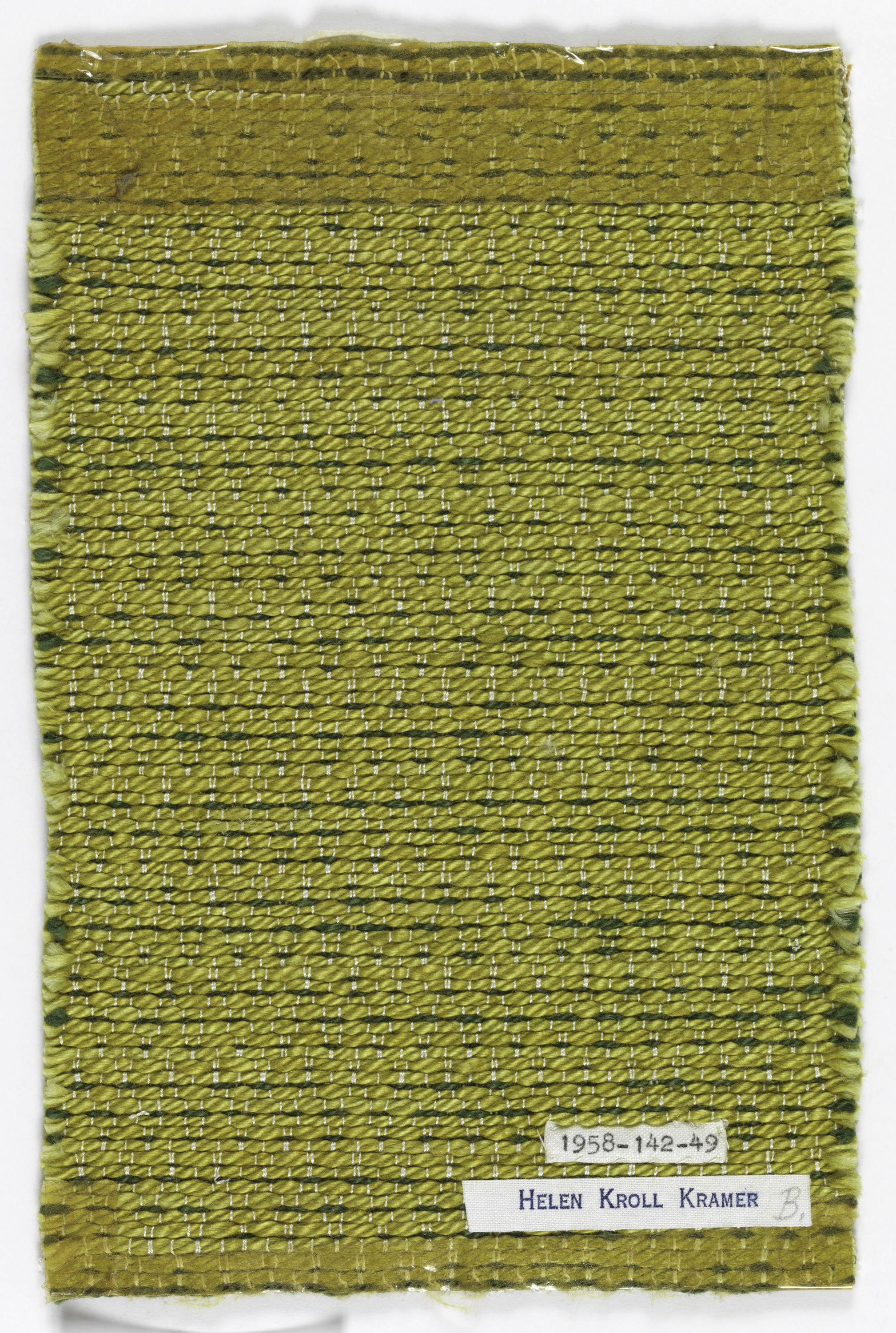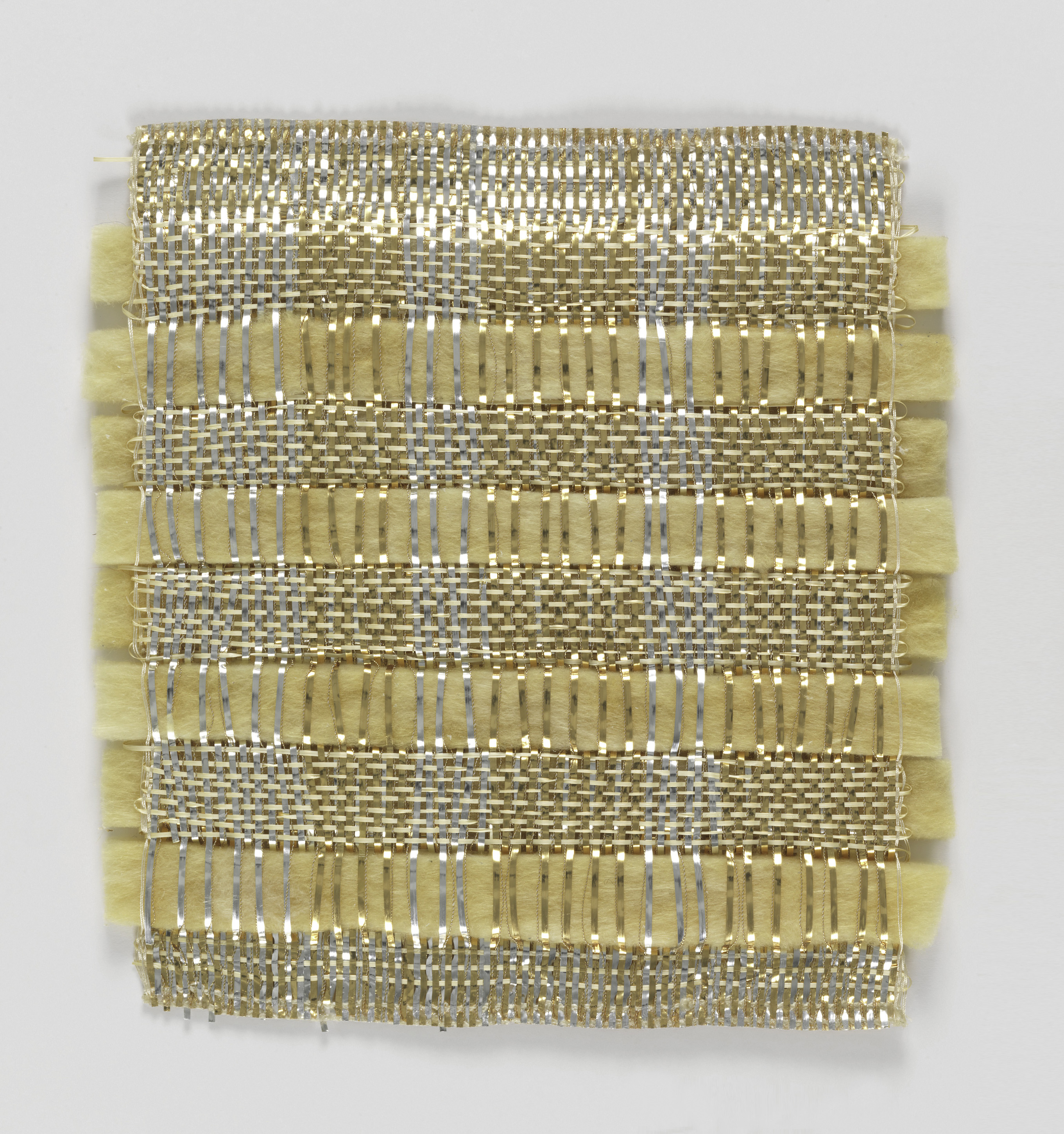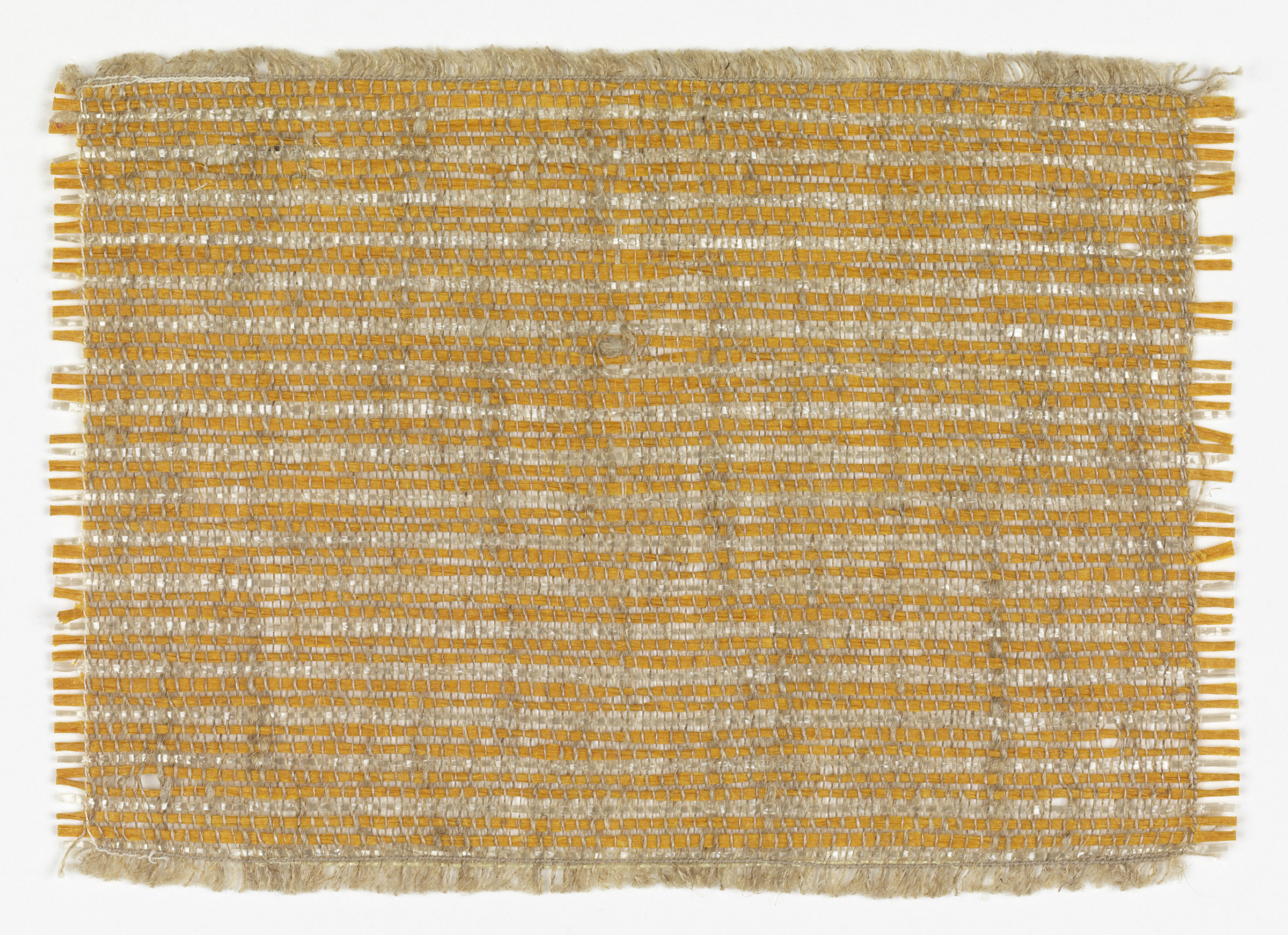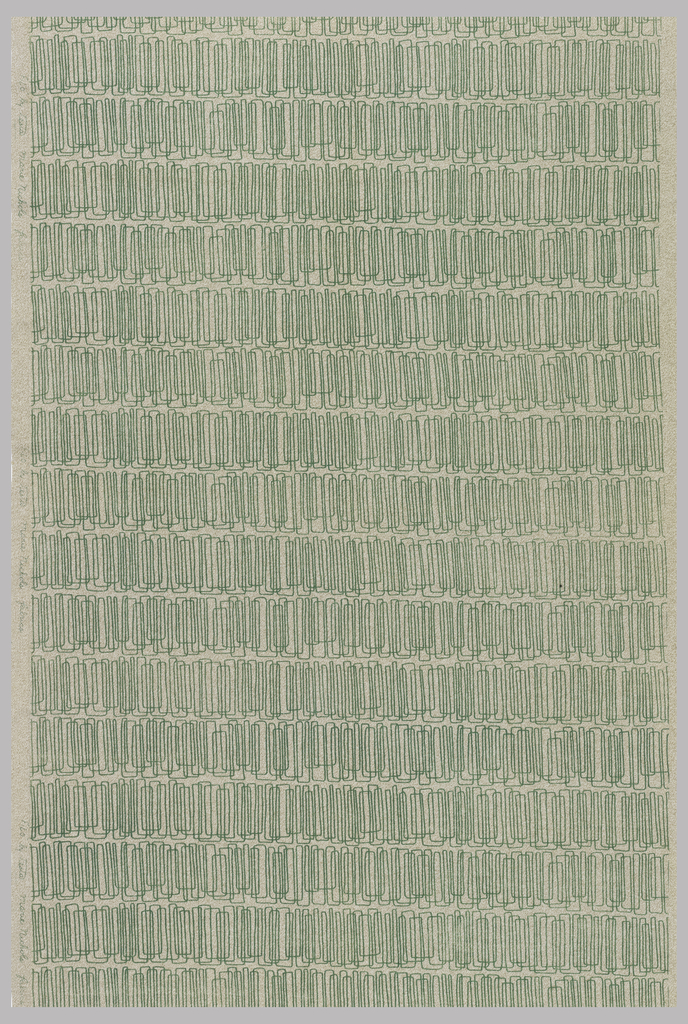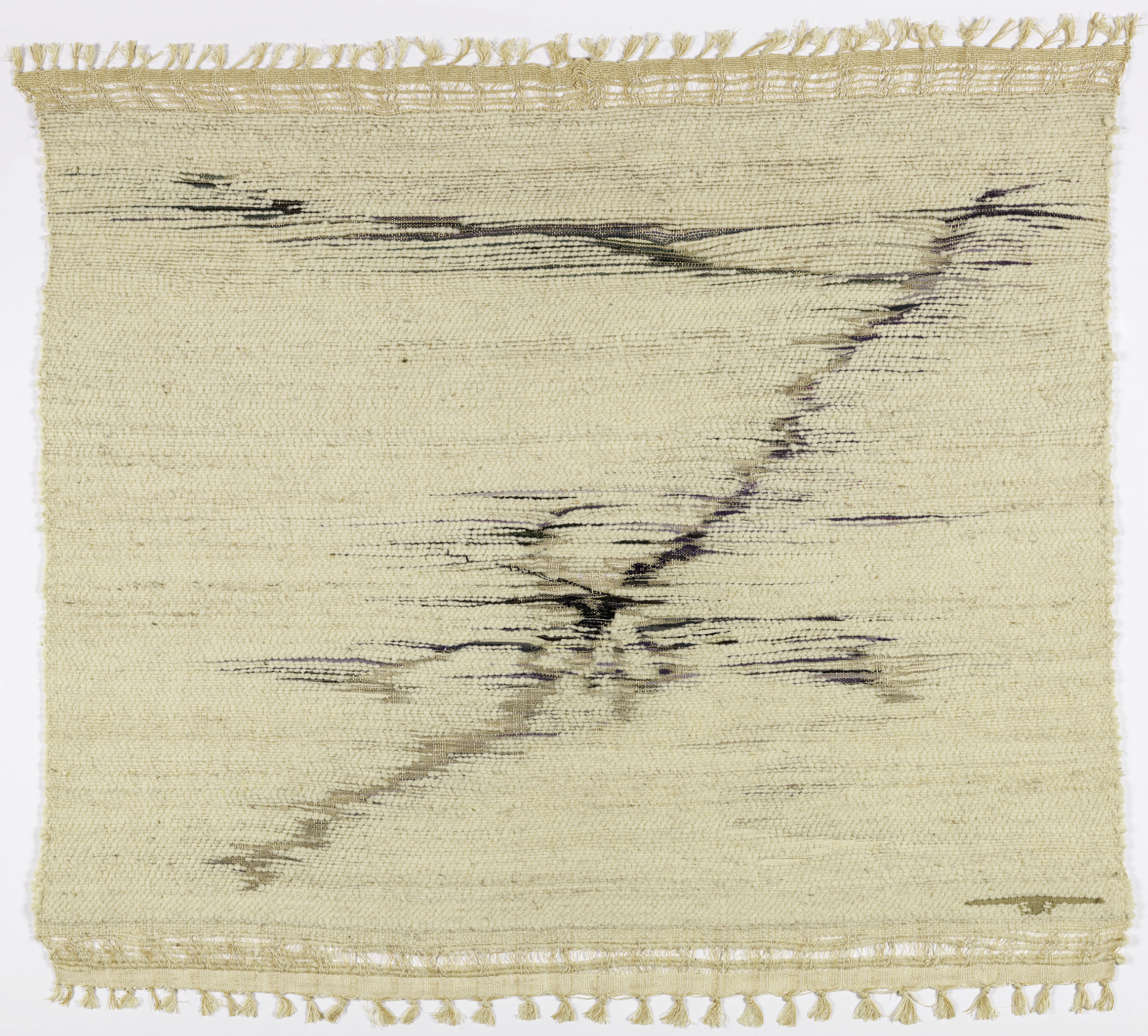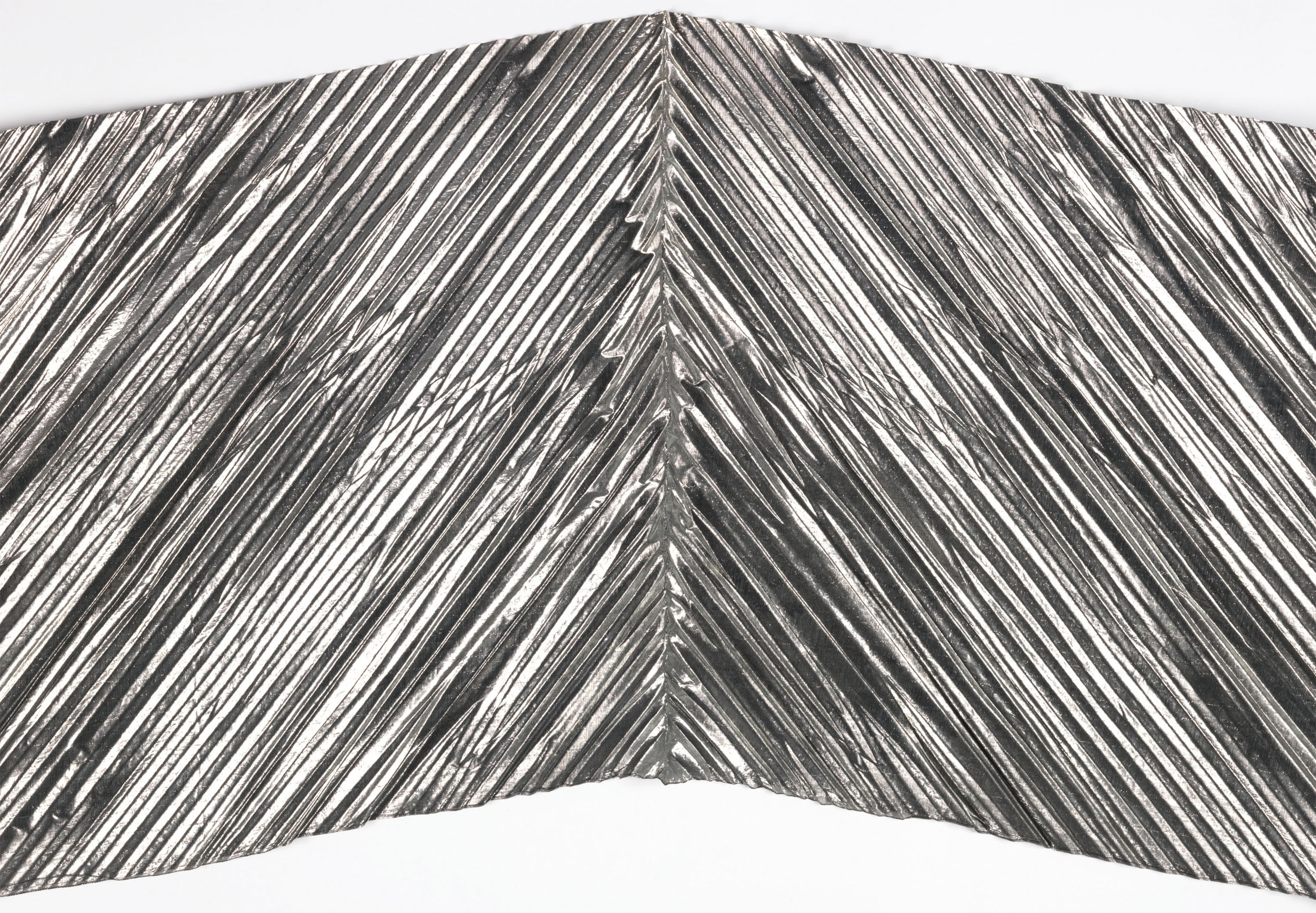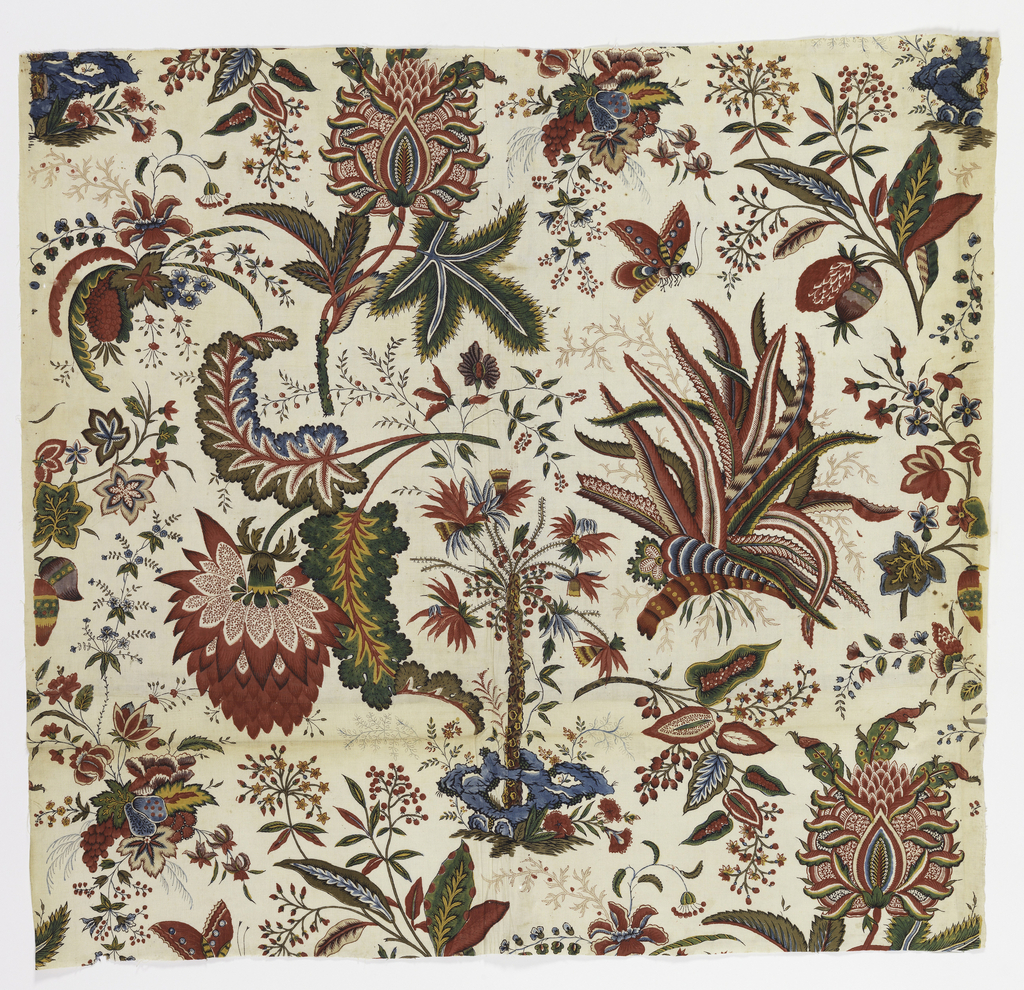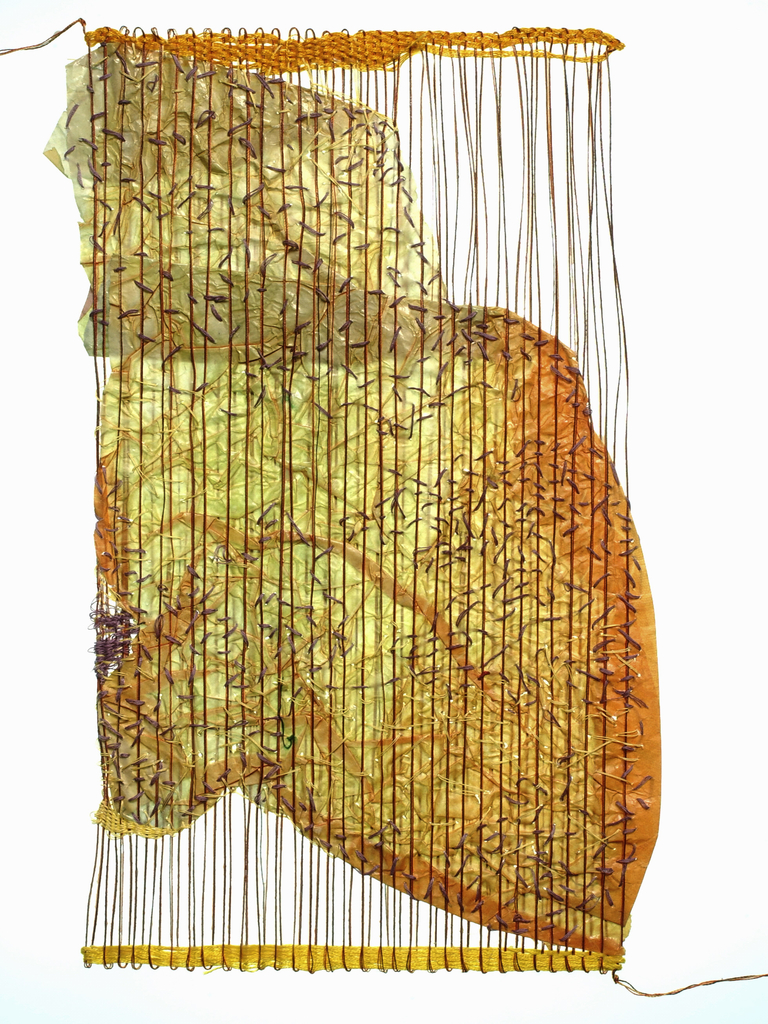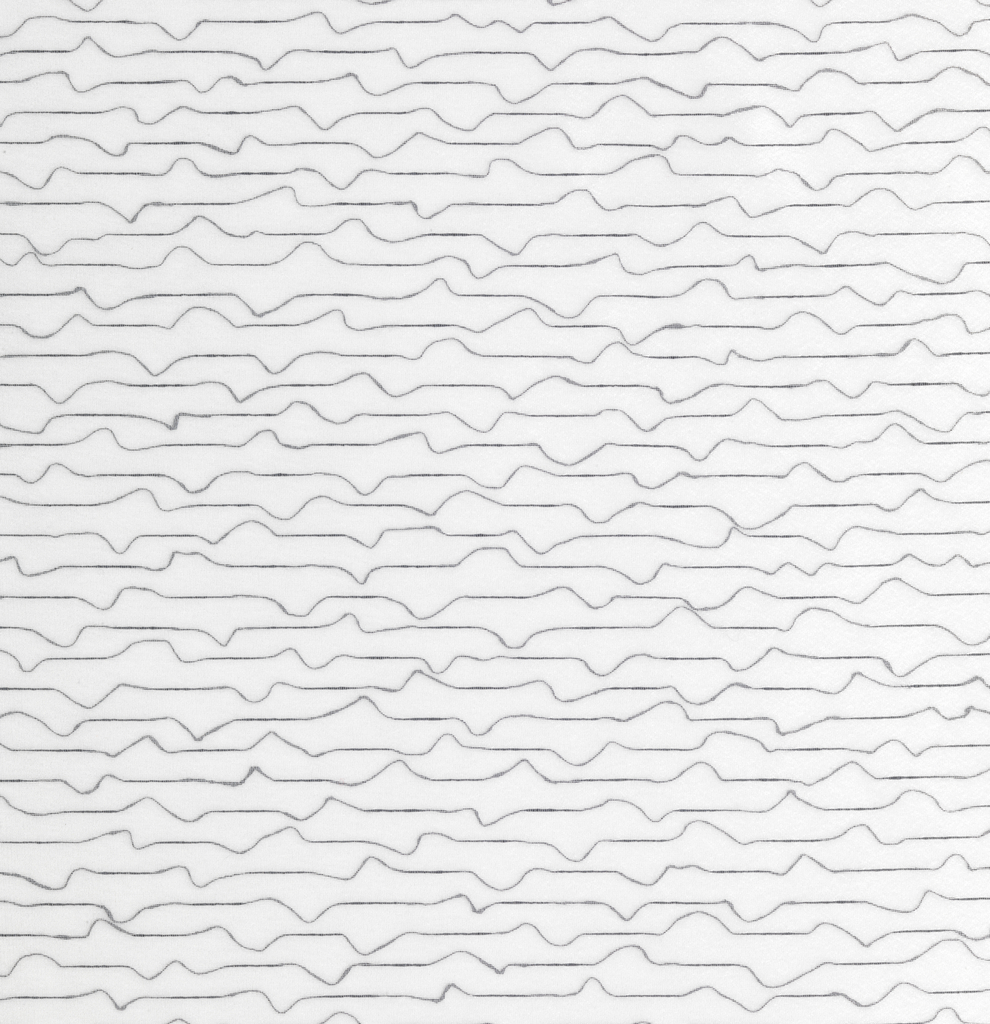In celebration of Women’s History Month, March Object of the Day posts highlight women designers in the collection. Trude Guermonprez began experimenting with what she called “textile graphics” around 1970; she described this evolution in her work as moving toward: “More [of] an awareness of our ties with the universe…I sense a quieting of passions...
Alexander Hayden Girard made an indelible (and colorful!) impact on 20th century modernist textile design. At the helm of Herman Miller’s textiles division, his playfulness provided a warm complement to the stark simplicity of furniture designs of Charles and Ray Eames and George Nelson. As its title suggests, Ribbons features overlapping, irregular vertical rectangles reminiscent...
This textile study sample was woven by Lydia van Gelder in preparation for a larger wall hanging, “Houses on a Street” that she created for the 1939 Golden Gate International Exposition in San Francisco. Serving as a diminutive sample for the larger piece, it is tapestry woven – double interlocked with extended dovetailing for shading....
This wall hanging, designed and woven by Maria Kipp, brings to mind an abstracted Los Angeles landscape. Hazy with mauve and pink smog, the horizon glitters with gold metallic strips of weft, reminiscent of the sun peeking from between the clouds. Its soft palette, hints of structural dimensionality and use of abstracted forms are typical...
This textile sample was designed and woven by Marianne Strengell, one of the most important textile artists and educators of the 20th century. Strengell employs a moody palette of blue, violets and blacks, punctuated with a metallic sheen reminiscent of stars emerging at twilight. The warp is composed of wool and rayon, with linen, lurex,...
This funky little chartreuse sample seems perfectly suited for an American mid-century interior. Woven by Helen Kroll Kramer between 1930-1958, it is composed of wool and rayon with contrasting bands of lime and pea green. Kramer is renowned as a successful 20th century artist and purveyor of handwoven textiles for upholstery and drapery. With her...
Though Mary Walker Phillips is recognized as an American fiber artist responsible for elevating the crafts of knitting and macramé to the realm of fine art, she was first and foremost, a weaver – and a wonderful one at that. This sample from 1960 appears simultaneously structurally precarious and visually charming. It is composed of...
In celebration of Women’s History Month, Cooper Hewitt is dedicating select Object of the Day entries to the work of women designers in our collection. “We use materials to satisfy our practical needs and our spiritual ones as well. We have useful things and beautiful things – equipment and works of art.” [1] Artist, weaver,...
Although the name may be unfamiliar to some, American textile designer Angelo Testa (American, 1921–1984) made an important contribution to 20th century textile design. As the very first graduate of the Institute of Design in Chicago, Testa was at the vanguard of the “New Bauhaus”, alongside Lazlo Moholy Nagy, Marli Ehrman and George Fred Keck....
With a deeply personal connection to weaving, Lenore Tawney’s craft was not an exercise in patience, but in devotion. Some of her works have even been called “altars of meditation” for their quiet spirituality. “Spring Thaw” is a fine example of the delicate and ethereal quality of her work. The background is creamy white, with...
Junichi Arai is indisputably one of the world’s foremost innovators in fabric and textile design. He was born in the city of Kiryu, Japan, an important center for textile production that boasts over 1,000 years of traditional silk weaving. As the sixth generation of a mill-owning family, Arai learned historical Japanese weaving techniques for obis...
During a routine trade trip to Pondicherry India in 1735, French naval officer Antoine de Beaulieu was both enamored and mystified by the Indians’ techniques for dyeing cloth. He endeavored to meticulously record each of the eleven distinct steps, including a sample of fabric at every stage of the process. His book was published in...
Sheila Hicks is one of the most important textile artists of the 20th century. She trained as a painter under Josef Albers at Yale’s School of Art and Architecture, and upon his recommendation applied for a Fulbright scholarship to study in Chile, commencing her lifelong commitment to textiles. Papillon (1997-2004), like others in her Miniatures...
Fluctuation is the perfect title for Japanese textile artist Akihiro Kaneko’s distinctive work, produced and sold today by Maharam. Made of polyester monofilament (like fishing-line thread) with a supplementary weft of washi, a traditional Japanese paper, the textile’s delicate simplicity is deceiving, as the process is actually quite complex. First, Kaneko creates the double cloth...
Junichi Arai is one of the world’s foremost innovators in textile design. He was born in Kiryu, Japan, an important center for textile production with over 1,000 years of silk-making tradition. As the sixth generation of a mill-owning family, Arai learned at an early age the customary Japanese weaving techniques for obis and kimonos. However,...
